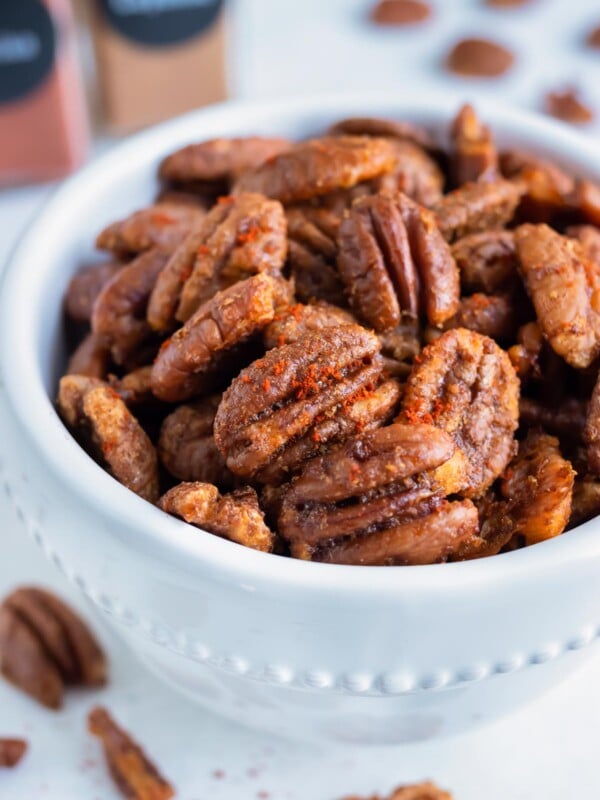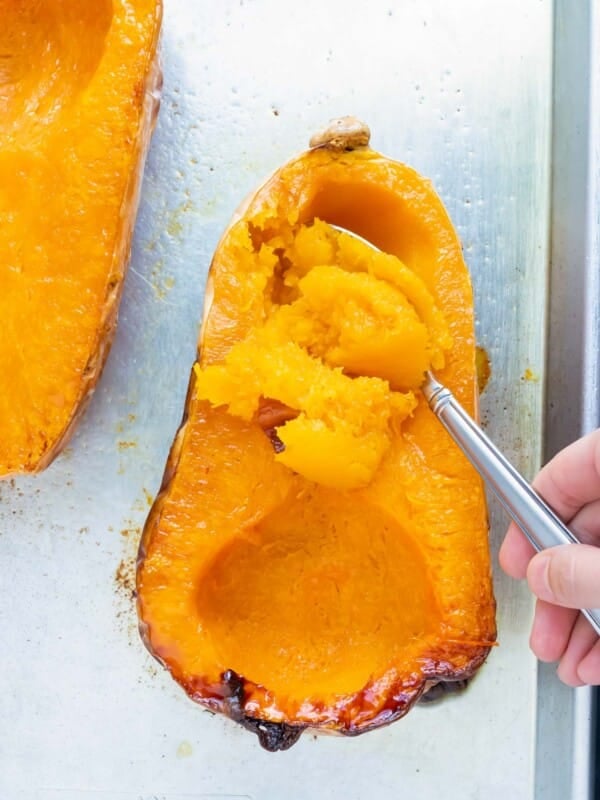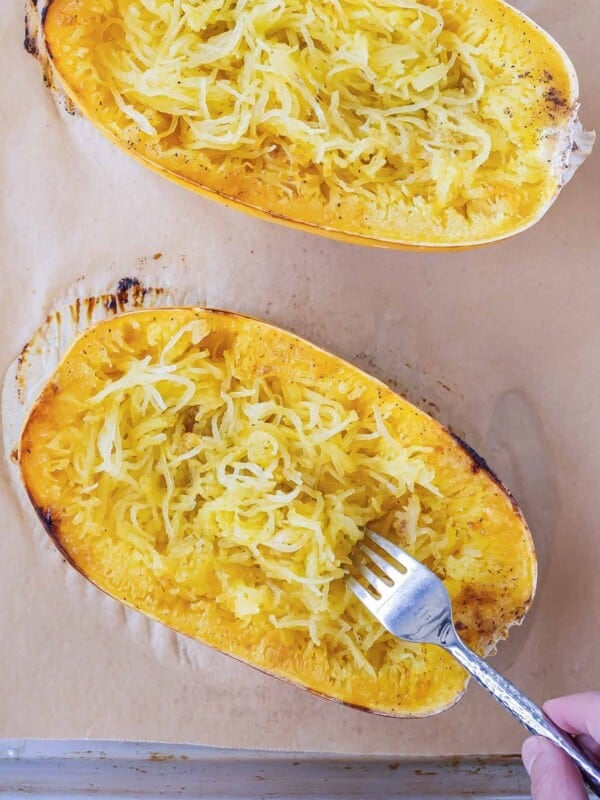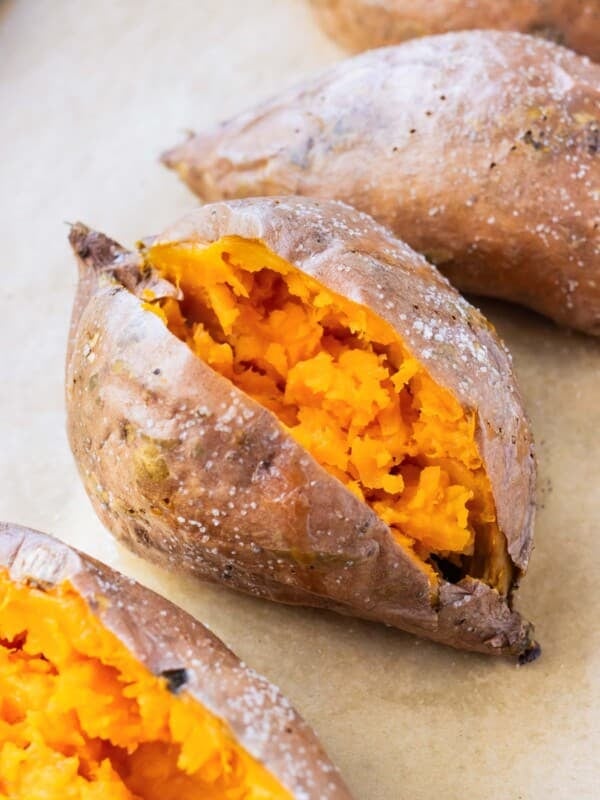In a pinch and need a balsamic vinegar substitute? Take a look at these 7 best types of vinegar blends that will mimic the balsamic vinegar’s flavor profile. Read to learn about the health benefits that this vinegar has to offer, and try out recipes that will have your family coming back for more!
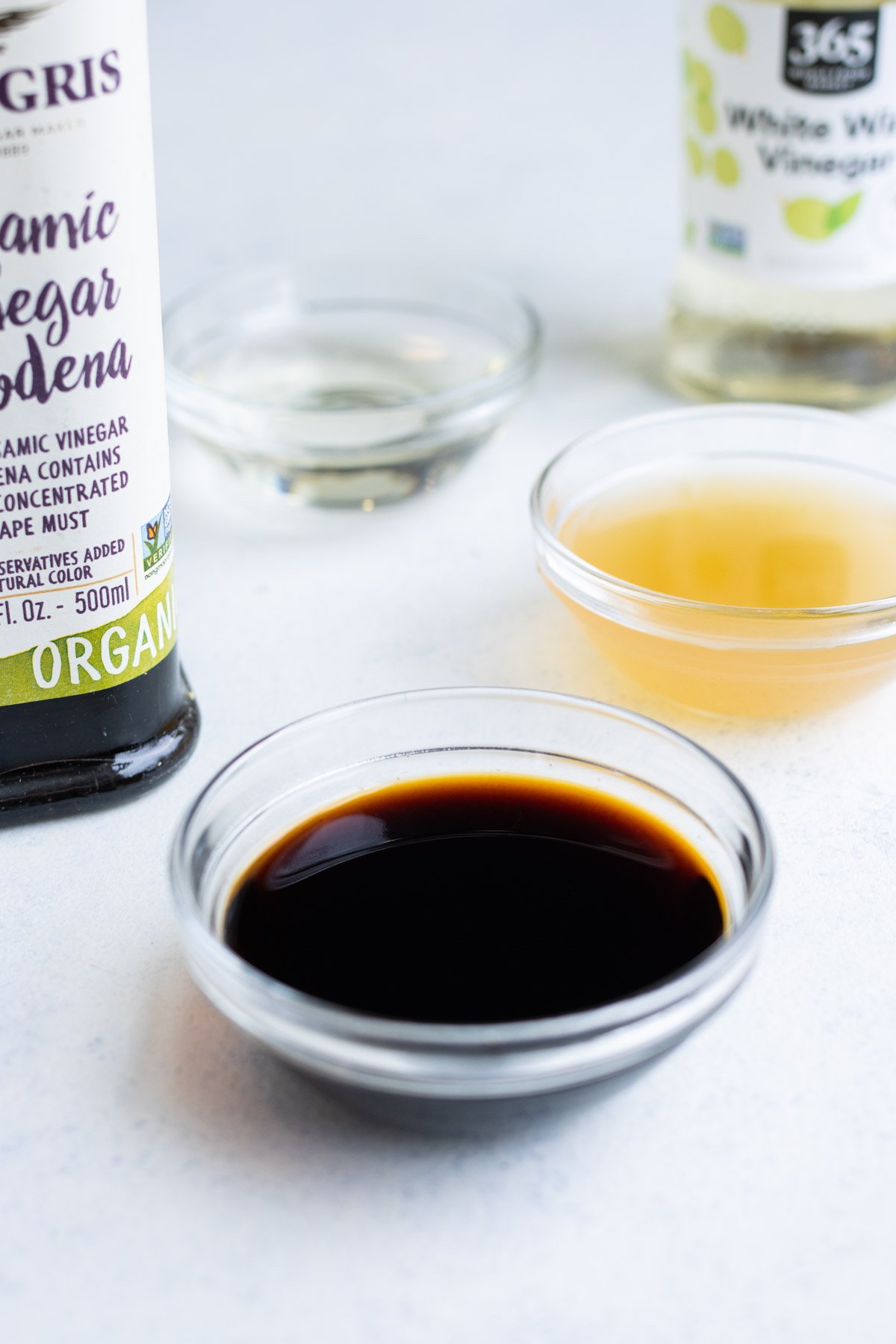
What is balsamic vinegar?
Balsamic vinegar is a dark, sweet, enriched type of vinegar that is used to embellish salad dressings, sauces, and marinades. Traditional balsamic vinegar does not go through a fermentation process, but an aging process and can take a long time (up to 12 years!). It starts out as grape juice that sits in wooden barrels to thicken over time.
The grape stems, skins, and seeds are the reason why balsamic vinegar gives us that fruity, punchy, delicious taste, as they sit in the barrels too. Additionally, the wood barrel that the grape juice sits in contributes to the taste of what the balsamic vinegar becomes, so the final product can taste anywhere from tangy to smokey.
Table of Contents
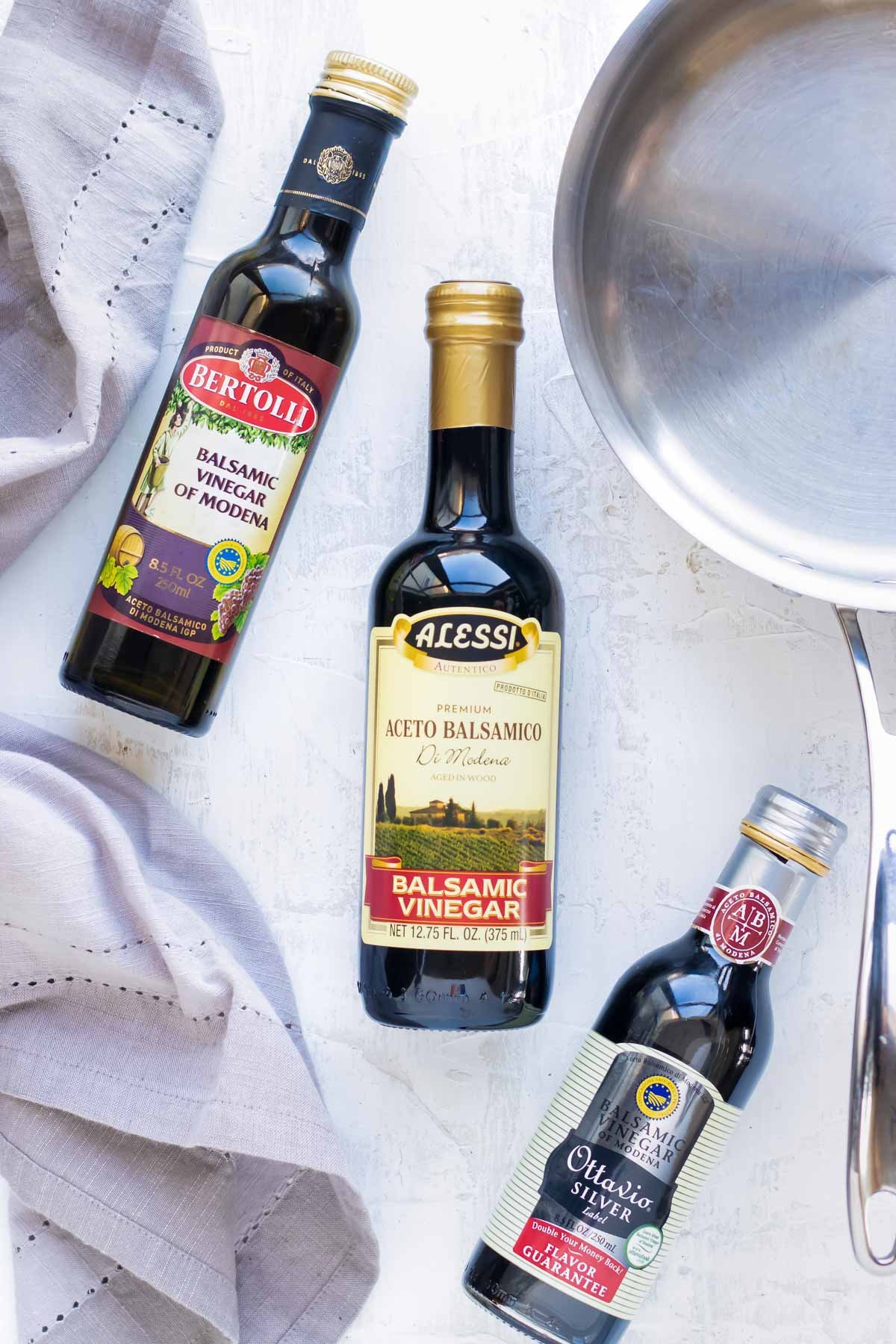
The Best Balsamic Vinegar Substitutes
Because balsamic vinegar has many components that make its flavor so rich, tangy, and subtly sweet, here are a list of blends that you can use to mimic the exact flavors you want. You’ll notice that these substitutes are all pantry staples which makes it that much more convenient for you!
1. Soy Sauce, Grape Jelly, Red Wine Vinegar
Because soy sauce has such a simplistic flavor, you need to add something more like grape jelly. It’s the perfect component because it has the grape from which balsamic vinegar is made AND it can easily be boiled down to a syrup-like consistency that you get with balsamic vinegar.
But that’s not the end of it. You also need something acidic to this blend. Adding 1 tablespoon of red wine vinegar will be the perfect amount of acidity that you need. There are many kinds of vinegar, so you can use whatever you have on hand, as long as it has enough bite, like the red wine vinegar.
This formula will give you the perfect amount in place of one tablespoon of balsamic vinegar:
- 1 Tbsp. red wine vinegar
- ½ tsp grape jelly
- ¼ tsp soy sauce
2. Beef Stock, White Vinegar, Sugar
Oddly enough, the flavor and color of beef stock is similar to balsamic, and all you have to do is add the acidic and sugar components to round it out. Add 1 ½ tsp of white vinegar to 1 Tbsp. of beef stock with a pinch or two of sugar.
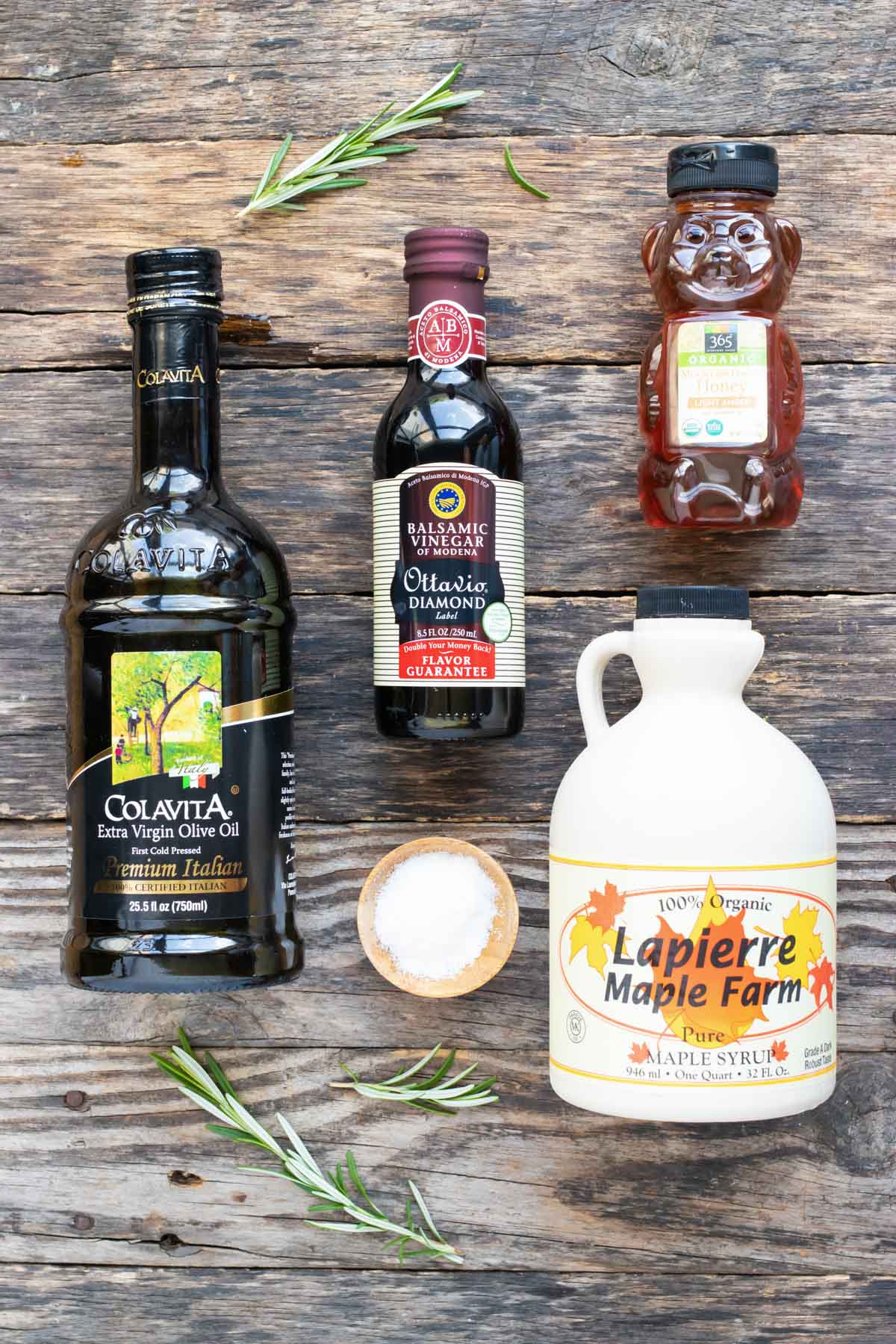
3. Soy Sauce, Lemon Juice, Molasses (or Honey)
Another good substitute blend would be with soy sauce again, but with fresh citrus instead. The lemon juice adds extra acidity, so you’ll need to add some sweetness to the mix. Molasses or honey would be a great option for this.
Molasses is dark in color like balsamic vinegar, and it has very similar flavors. It has a thicker consistency, so it matches well with balsamic vinegar.
Mix equal parts of all three ingredients to make about 1½ Tbsp. of balsamic vinegar:
- ½ Tbsp. soy sauce
- ½ Tbsp. lemon juice
- ½ Tbsp. molasses or honey
4. Red Wine Vinegar, Maple Syrup
A combination of red wine vinegar and maple syrup will make a significant impact as a balsamic vinegar substitute. Red wine vinegar has the same amount of acidity as balsamic vinegar. To make up for the sweetness that this vinegar lacks, add two parts maple syrup to get that sweet taste you’re looking for.
Use 1 Tbsp. of red wine vinegar and 2 tsps maple syrup for this blend. It’s best to use real maple syrup instead of manufactured with this one.
5. Worcestershire Sauce, Lemon Juice, Maple Syrup (or Honey)
Worcestershire sauce’s complex flavor is a great way to begin matching the flavor to balsamic vinegar. It lacks acidity, so splash some lemon juice with it. Lastly, the sweet component can be added through maple syrup or honey.
Mixing these 3 ingredients will give you a distinct flavor that will not leave your tastebuds disappointed. Mix 1 Tbsp. of Worcestershire sauce with 1½ tsp. of maple syrup or honey with a splash of lemon juice.
6. White Wine Vinegar, Sugar
White wine vinegar could be a great option, but its delicate flavor needs some assistance to get it to the flavor profile of balsamic vinegar. Combining it with white sugar will give you that balsamic sweetness. 1 Tbsp. of white wine vinegar with ½ tsp of white sugar will do the trick with this one.
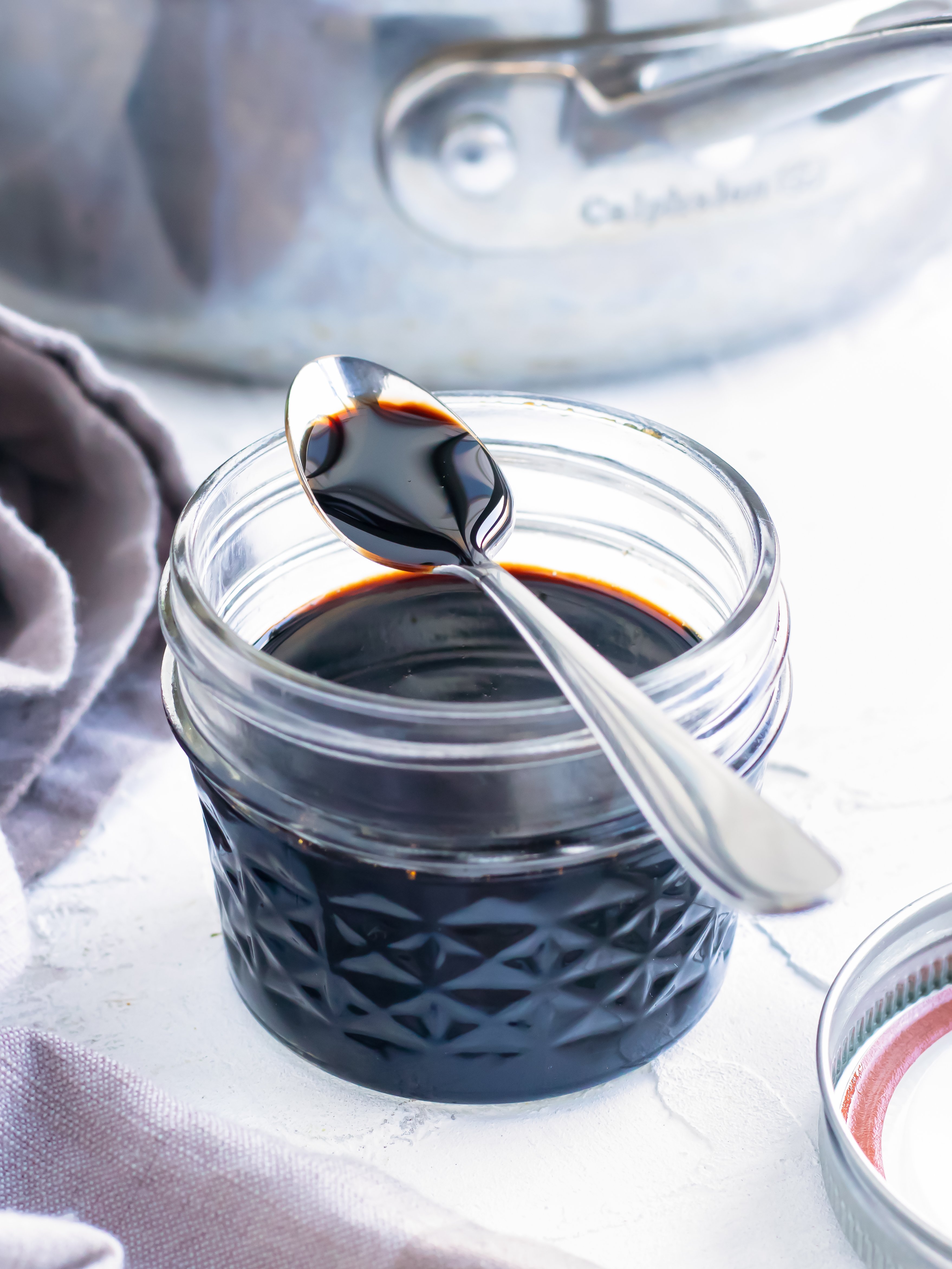
7. Apple Cider Vinegar, Sugar
Apple cider vinegar is a good option if you have it on hand because it’s made from fruit like balsamic vinegar. Since it is really strong, adding a little sugar will balance out the flavor. Brown sugar would be best because it does have molasses in it, and that’s a major component to balsamic vinegar substitutes.
When needing 1 Tbsp. of balsamic vinegar, add 1 Tbsp. of apple cider vinegar to ½ Tbsp. of sugar (white sugar or brown sugar). Make sure the sugar fully dissolves into the apple cider vinegar before adding it to your recipe by heating it on low on the stovetop or in the microwave.
Balsamic Vinegar Nutrition
Because you don’t need to use much in any recipe, balsamic vinegar doesn’t necessarily add or take away any nutrients. But, for 1 tablespoon of balsamic vinegar, here is what you can expect:
| Calories | 14 |
| Fat | 0 g |
| Sodium | 2.7 g |
| Carbohydrates | 2.7 g |
| Sugars | 2.4 g |
| Fiber | 0 g |
| Protein | 0 g |
As you can see, it is so low in macronutrients, which makes it an excellent choice for flavoring foods. It won’t really interfere with special diets or specific health goals.
Health Benefits of Balsamic Vinegar
Here are 5 potential health benefits from consuming balsamic vinegar:
Aiding Healthy Digestion
Because acetic acid is an active ingredient in this vinegar, it contains probiotics that assist digestion. These specific probiotics like Bifidobacterium infantis and Lactobacillus acidophilus promote great gut health and digestion in addition to encouraging overall immune function.
Bettering Skin Health
Balsamic vinegar also contains antioxidants that may improve skin complexion over time. While other vinegars can be applied to the skin directly, it’s not advised to put balsamic vinegar directly on the skin due to its dark color that can cause stains. The best way to see results is to eat it in your every day diet.
Supporting Blood Circulation
Since balsamic vinegar is acquired by grapes, studies have shown that grapes could prevent cardiac disease by preventing platelets building up in blood vessels.
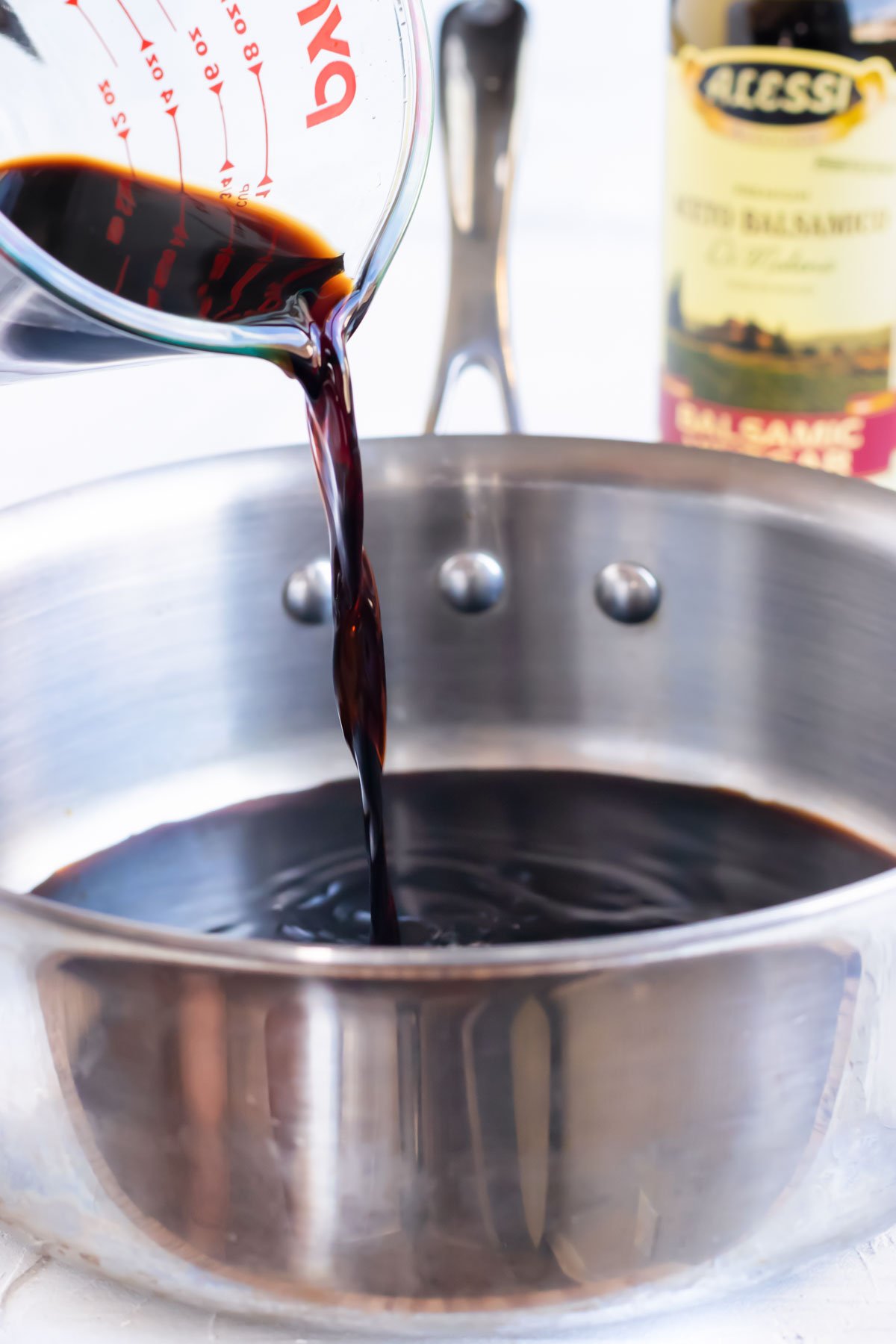
Medicating Wounds
It is suggested that balsamic vinegar has antibacterial, antiviral, and antifungal properties. Current studies are going on right now to prove or deny these claims.
Lowering Cholesterol
With balsamic vinegar’s antioxidants, it can help block toxic cells in the body that attribute to high cholesterol. Studies have been shown to prove that cholesterol levels indeed lower when one consumes balsamic vinegar.
FAQs
The substitution for balsamic vinegar depends on your recipe. When making a salad dressing, choose a lighter vinegar in acidity. Substitute blends that have soy sauce or Worcestershire sauce are better used for glazes and marinades because of their complex flavors.
Balsamic vinegar can be used for vinaigrettes, dressings, or to even top off a fresh bruschetta spread. It can also be reduced and used as a glaze (most commonly in Italian cuisine). In small amounts, balsamic vinegar can go a long way and it easily shines through any recipe.
The Best Vinegar Recipes
Take a look into these glazes and dressings you can make with balsamic vinegar and its substitute blends:
The balsamic vinegar in these recipes can easily be replaced with substitute blends:
- Honey Balsamic Glazed Chicken
- Arugula Fig Salad with Balsamic Vinaigrette
- Fresh Tomato Bruschetta
- Chopped Broccoli Salad with Balsamic Walnuts and Cranberries
- Roasted Beet Salad with Goat Cheese
If you’d like to learn more about substitutes and vinegars, check out these posts answering all your questions and more:


